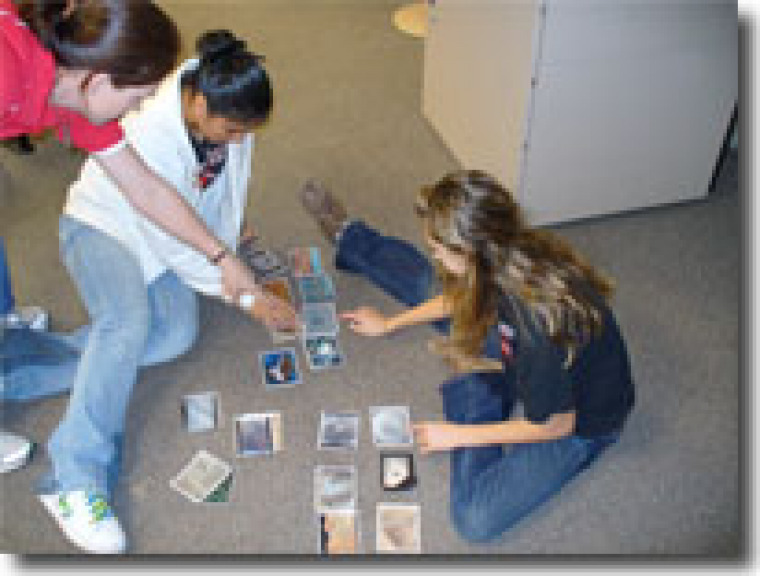Vuna Fa
Vuna Fa, co-sponsored by the University of Arizona Department of Immunobiology
Research in biotechnology has grown to encompass almost any imaginable field of scientific research ranging from the science of space exploration to the treatment of disease. Biotech research will undeniably continue to shape our world and ultimately lead to more fascinating discoveries. However, current tools and techniques used in biotechnology can seem both complicated and intimidating to many middle and high school students and even some teachers. This is particularly true if the students do not have a clear understanding of basic science. After a discouraging personal experience with the sciences in high school, I never imagined myself capable of doing anything science-related. As a business major in college my child was diagnosed with a prenatal heart condition exposing me to the world of medicine and ultimately medical research. Today, I am an immunology graduate student studying T cell development including how thymic T cells develop in microgravity. I believe that presenting the basic science behind current scientific techniques, along with the history and people behind them, in a hands-on and entertaining way will help these students to become more scientifically literate and may even be that “eye-opening” experience that leads some students to consider science as a career. My education outreach project consists of 4 presentations called Biotech Labs that present various topics including the race to discover DNA structure, DNA analysis, how diseases are discovered and treated, and why gravity is such a big deal. My target audience for these presentations are students traditionally underrepresented within the science field including underrepresented minorities, students from low-income homes, and students that would be first generation college graduates. Initially, I present these interactive Biotech Lab presentations in science classes after meeting with the teachers to help them prepare their class and to determine the level and needs of the class. I am also developing material for the teachers so that they can continue these Biotech Labs on their own in subsequent years. I am working with various charter and public schools in the Casa Grande, Coolidge, Tucson, and surrounding areas. I am also working on a website that will make these presentations and related material and links available to any teacher or student.
The NASA/UA Spacegrant fellowship is helping me to realize one of my true joys in teaching as well as helping young students to gain greater confidence and understanding with respect to scientific discovery.


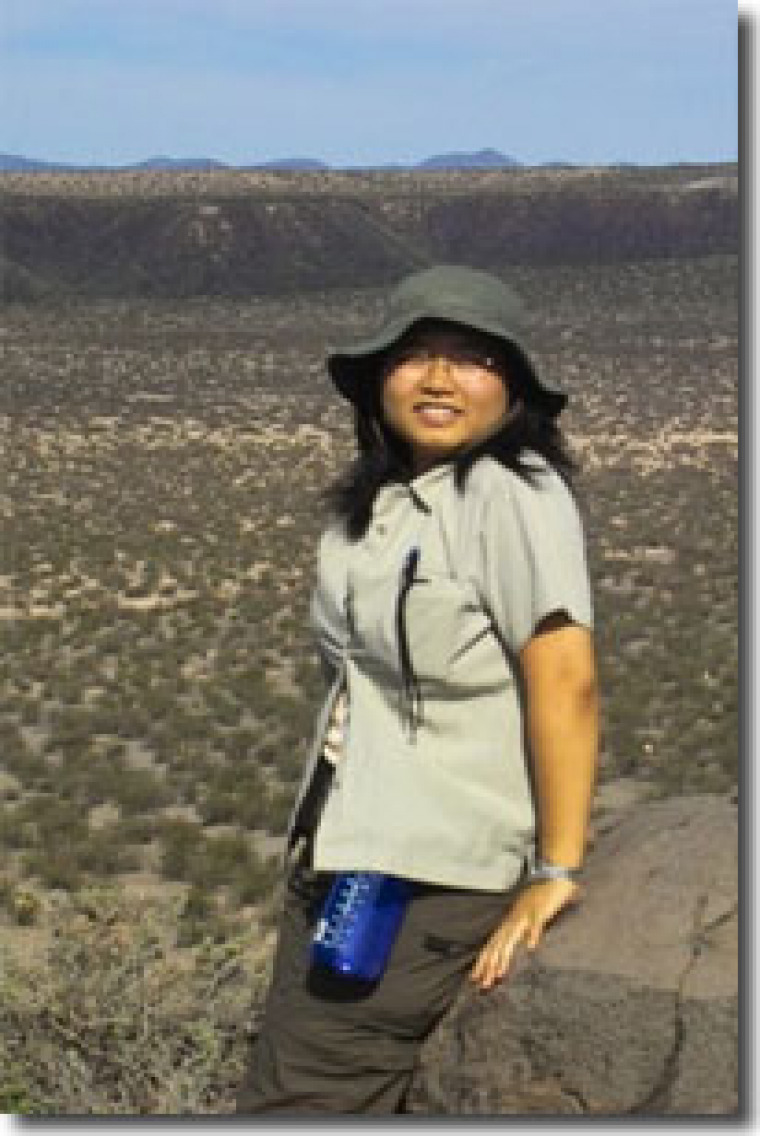
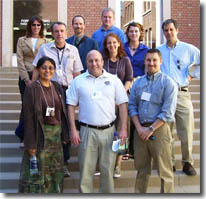 One goal of the project is to develop a curriculum that will engage participants in scientific inquiry and processes, rather than presenting an overwhelming amount of facts. To this end, I created a web module demonstrating how climate change may already be increasing winter minimum temperatures at several locations around the state that allows users to ask questions and explore climate data. This module was coupled with other hands-on activities at the workshop, including a visit to the UA Laboratory for Tree-Ring Research to see how the varying annual bands of trees hold clues to the climate of the past and an interactive presentation of the online vegetation-monitoring tool, Arizona RangeView.
One goal of the project is to develop a curriculum that will engage participants in scientific inquiry and processes, rather than presenting an overwhelming amount of facts. To this end, I created a web module demonstrating how climate change may already be increasing winter minimum temperatures at several locations around the state that allows users to ask questions and explore climate data. This module was coupled with other hands-on activities at the workshop, including a visit to the UA Laboratory for Tree-Ring Research to see how the varying annual bands of trees hold clues to the climate of the past and an interactive presentation of the online vegetation-monitoring tool, Arizona RangeView.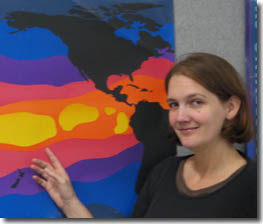 For 2006-2007, we are planning a second workshop to be held in northern Arizona and will possibly extend the outreach program to editors, publishers, and journalism students. As part of graduate seminar on climate change, I am working with other students to analyze the latest climate change projections and determine how they will influence the Southwest. The information from the class will fuel some of content for the next workshop and I will also be aiding in developing website content for the public based on the results. I am continuing to refine the web module developed in the first year of the project and am working with a professor at Pima Community College who plans to use it her biology/environment courses. My final goal for the project is to develop a website that will be a permanent resource for journalists writing about climate change issues.
For 2006-2007, we are planning a second workshop to be held in northern Arizona and will possibly extend the outreach program to editors, publishers, and journalism students. As part of graduate seminar on climate change, I am working with other students to analyze the latest climate change projections and determine how they will influence the Southwest. The information from the class will fuel some of content for the next workshop and I will also be aiding in developing website content for the public based on the results. I am continuing to refine the web module developed in the first year of the project and am working with a professor at Pima Community College who plans to use it her biology/environment courses. My final goal for the project is to develop a website that will be a permanent resource for journalists writing about climate change issues.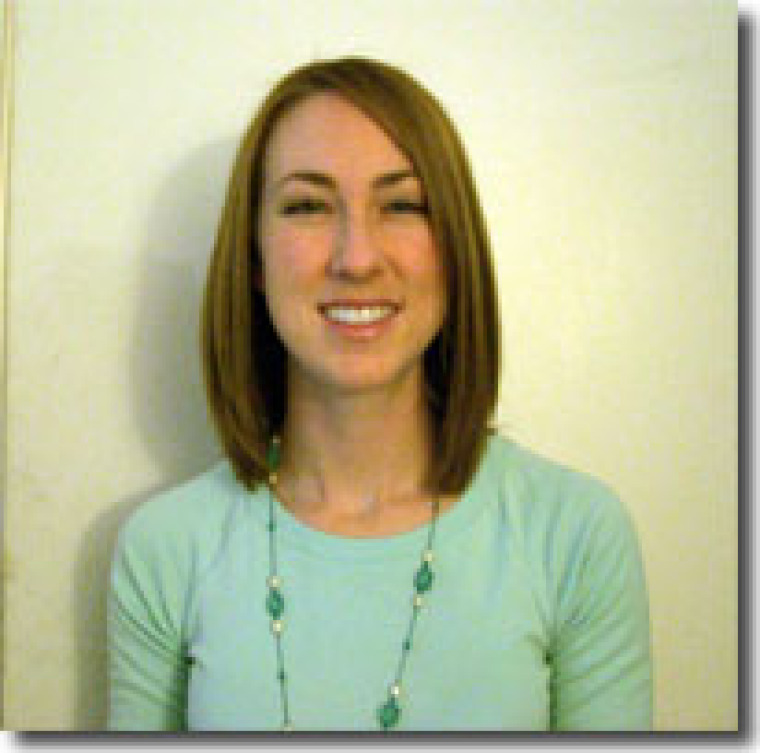
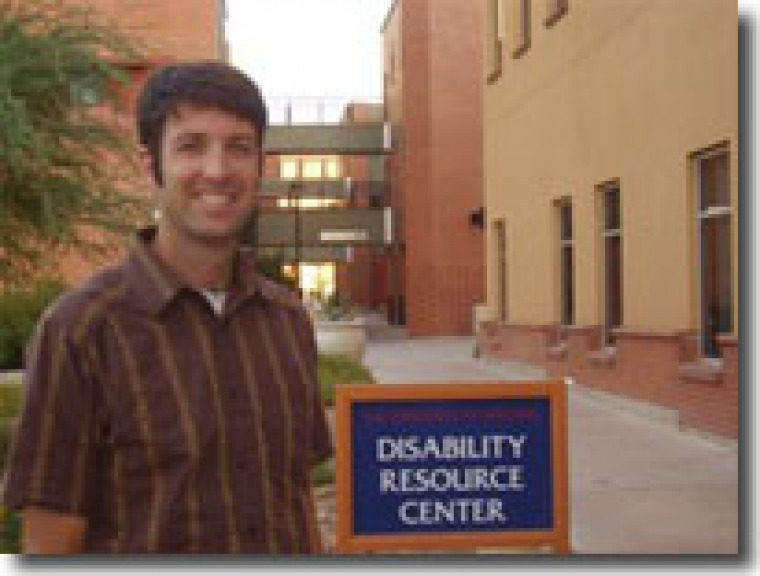
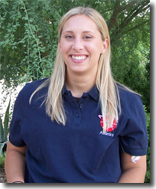
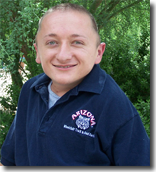 Jackie Cimino and Kyle Mutz joined the project during the Fall 2007 semester as Space Grant interns, supported by the Foundation Carinoso. Jackie is a psychology major in her third year at Arizona, and plays on the UA wheelchair tennis team. Kyle is working on his Masters in Rehabilitation Counseling, and recently returned from competing on the track in the Para-Pan American Games in Brazil. Kyle and Jackie worked on creating a final report for the project that was shared with the wider UA community, and built a web-accessible GIS interface for displaying the results of the map interviews.
Jackie Cimino and Kyle Mutz joined the project during the Fall 2007 semester as Space Grant interns, supported by the Foundation Carinoso. Jackie is a psychology major in her third year at Arizona, and plays on the UA wheelchair tennis team. Kyle is working on his Masters in Rehabilitation Counseling, and recently returned from competing on the track in the Para-Pan American Games in Brazil. Kyle and Jackie worked on creating a final report for the project that was shared with the wider UA community, and built a web-accessible GIS interface for displaying the results of the map interviews.